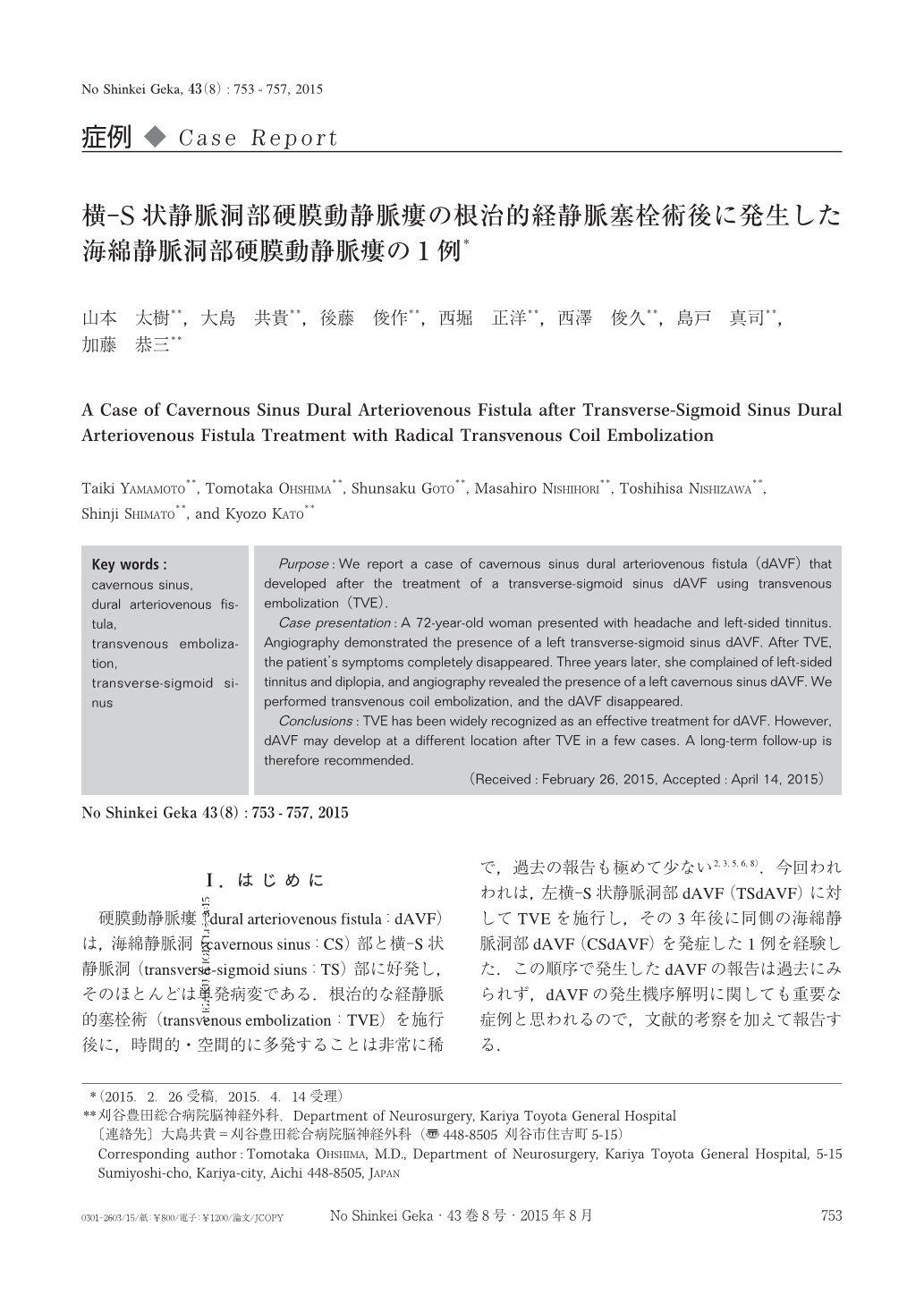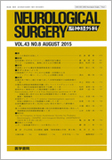Japanese
English
- 有料閲覧
- Abstract 文献概要
- 1ページ目 Look Inside
- 参考文献 Reference
Ⅰ.はじめに
硬膜動静脈瘻(dural arteriovenous fistula:dAVF)は,海綿静脈洞(cavernous sinus:CS)部と横-S状静脈洞(transverse-sigmoid siuns:TS)部に好発し,そのほとんどは単発病変である.根治的な経静脈的塞栓術(transvenous embolization:TVE)を施行後に,時間的・空間的に多発することは非常に稀で,過去の報告も極めて少ない2,3,5,6,8).今回われわれは,左横-S状静脈洞部dAVF(TSdAVF)に対してTVEを施行し,その3年後に同側の海綿静脈洞部dAVF(CSdAVF)を発症した1例を経験した.この順序で発生したdAVFの報告は過去にみられず,dAVFの発生機序解明に関しても重要な症例と思われるので,文献的考察を加えて報告する.
Purpose:We report a case of cavernous sinus dural arteriovenous fistula(dAVF)that developed after the treatment of a transverse-sigmoid sinus dAVF using transvenous embolization(TVE).
Case presentation:A 72-year-old woman presented with headache and left-sided tinnitus. Angiography demonstrated the presence of a left transverse-sigmoid sinus dAVF. After TVE, the patient's symptoms completely disappeared. Three years later, she complained of left-sided tinnitus and diplopia, and angiography revealed the presence of a left cavernous sinus dAVF. We performed transvenous coil embolization, and the dAVF disappeared.
Conclusions:TVE has been widely recognized as an effective treatment for dAVF. However, dAVF may develop at a different location after TVE in a few cases. A long-term follow-up is therefore recommended.

Copyright © 2015, Igaku-Shoin Ltd. All rights reserved.


